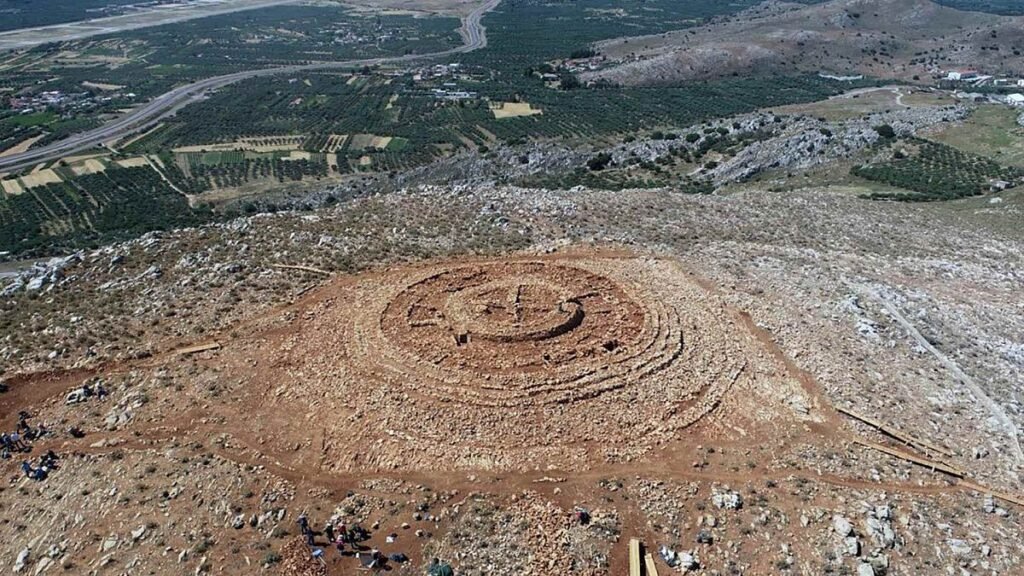Construction of a major new airport in Greece has hit a snag due to the discovery of an ancient round stone building in Crete. Archaeologists are puzzled by the purpose of the building, speculating it may have been used for ritual ceremonies. Despite the significance of the find, Greece’s Culture Ministry has decided to proceed with the airport project while preserving the archaeological site. The new airport in Crete is expected to become Greece’s second largest when it opens in 2027, replacing the current Heraklion airport. The building is one of 35 archaeological finds at the site, showcasing the rich history of Crete’s Minoan civilization.
The discovery of the round stone building has raised questions about its origin and function, as it lacks any known parallels to Minoan structures. The building, resembling a huge car wheel from above, has intricate inner structures with interconnecting spaces and shallow conical roofs. It is surrounded by eight stepped stone walls, suggesting it was a communal building rather than a dwelling. The careful construction and size of the building indicate it required significant labor, specialized knowledge, and strong central administration. Analyzing the animal bones found inside has provided clues to its use, dating back to 2000-1700 B.C. during the early Minoan period.
The construction of the new Kastelli airport in Crete has unearthed a wealth of archaeological sites, adding to the understanding of Crete’s rich history. The discovery of the round stone building adds to the mystery and allure of the site, showcasing the sophistication and complexity of the Minoan civilization. Despite the challenges posed by the archaeological find, Greece’s Culture Ministry plans to proceed with the airport project while ensuring the preservation of the newly discovered site. The airport, set to open in 2027, is expected to handle up to 18 million travelers annually, boosting tourism and economic growth in the region.
The Ministry of Culture in Greece has described the round stone building as a “unique and extremely interesting find” from the Minoan civilization, known for its magnificent palaces and enigmatic writing system. The site of the new airport in Crete has been a treasure trove of archaeological discoveries, shedding light on the ancient inhabitants and their customs. The decision to relocate the radar station to protect the newfound site demonstrates the government’s commitment to preserving cultural heritage while promoting economic development. As experts continue to excavate and analyze the round stone building, more insights into its purpose and significance are expected to emerge.
The discovery of the round stone building in Crete has captured the imagination of experts and the public alike, offering a glimpse into the rituals and ceremonies of the ancient Minoan civilization. The elaborate construction and layout of the building suggest a communal gathering place for important events, possibly related to religious or ceremonial practices. The significance of the find lies in its uniqueness and enigmatic nature, challenging researchers to uncover more about its origins and historical context. The decision to balance the development of the new airport with the preservation of the archaeological site reflects a harmonious approach to cultural heritage and economic progress in Greece.
The round stone building, discovered on the site of the new airport in Crete, stands as a testament to the enduring legacy of the Minoan civilization and the rich tapestry of history in the region. As experts delve deeper into the mysteries of the building and its possible uses, the significance of the find continues to grow. The construction of the airport symbolizes progress and modernity, while the preservation of the archaeological site pays homage to the ancient roots of the land. The balance between development and conservation exemplifies Greece’s commitment to honoring its cultural heritage and embracing the future. The round stone building serves as a bridge between the past and the present, connecting generations through the shared exploration of history and archaeology.

